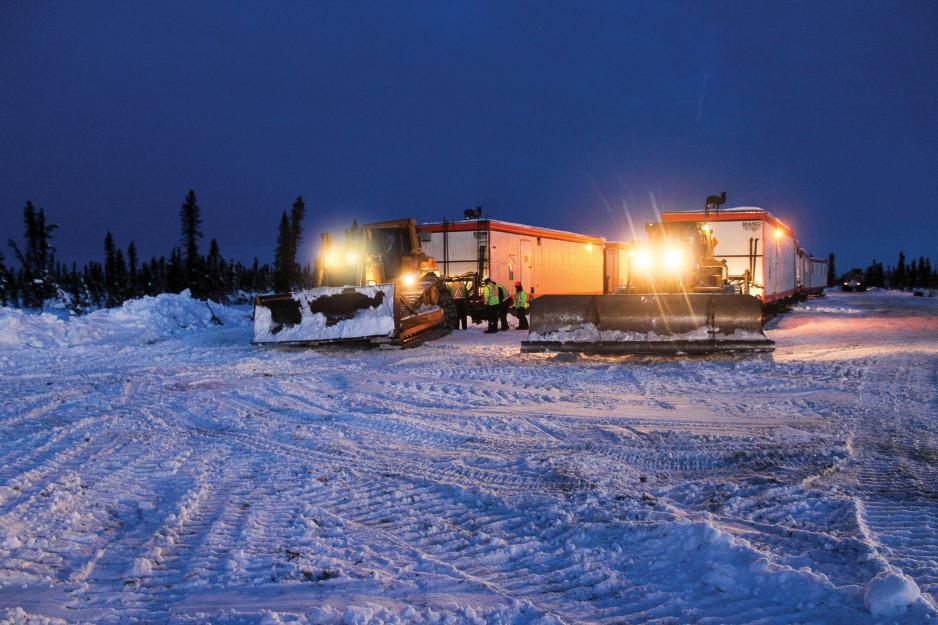Bringing state of the art telecommunications to Canada’s North

The long-awaited Mackenzie Valley Fibre Link reached Inuvik earlier this month, connecting the communities along the valley to the larger Canadian fibre network.
Alexander Mackenzie, in search of the fabled northwest passage, allegedly called the river that now bears his name the "river of disappointment" when it turned North towards the Arctic—instead of ending up in the Pacific. Since then, the Mackenzie Valley has seen its fair share of frustration with several aborted attempts at installing an oil pipeline and a planned all-weather highway that has yet to make it off the drawing board. Earlier this month, the approximately 10 thousand residents living in the valley got some good news: the Mackenzie Valley Fibre Link (MVFL) was finally complete.
The MVFL is a 1,154 km long high-speed telecommunications system that runs almost the full height of the Northwest Territories in Canada. It stretches from McGill Lake in the South, where it connects to the larger Canadian fibre network, to Inuvik in the North. A project contracted by the Government of the Northwest Territories, the MVFL is billed as a way to improve the delivery of education, health, and social services—much of which is done remotely in Canada’s North. The project is also a way of promoting economic diversification in the territory.
A troubled start
The future of this ambitious project was not always clear.
While the Government of Northwest Territories had initially estimated the project to cost between $60 million to $70 million, the first bump in the road came when the contract that was eventually signed with Northwestel and Vancouver-based Ledcor ran significantly higher at $84 million.
As well as the challenges facing all major construction projects in the north; limited site access, climate related issues and higher costs; the Mackenzie Valley fibre project was plagued with both organizational and technical problems. A series of inspection reports in May 2015 alerted the contractor to issues with the cable being exposed or improperly fixed at river crossings. These reports also highlighted that the project improperly disposed of waste materials and that many of the trenches were eroding—posing risks to the cable and to wildlife.
Beyond construction setbacks, the project was also mired in controversy with contractors both being fired and quitting halfway through the job. While Ledcor initially fired Rohl Enterprises after they had completed two thirds of the project, several contractors hired to replace them later quit mid-project over allegations that Ledcor was unprepared for the job.
Ken Goldade, the owner of one of the companies who quit mid-project, reflected that: "I've been involved with big projects in my life, and this one was a cluster-f from the get go."
A promising future
Despite the setbacks, now that the project is complete both the government and residents are hoping that this will help "modernize" the economy in the North. That internet speeds have tripled in many communities while the monthly cost of internet has fallen are seen as promising early signs.
The Inuvik Satellite Station Facility (ISSF)—located at the terminus of the MVFL—will in particular benefit from the introduction of high speed internet service. The ISSF is a remote sensing facility with antennae owned by France’s Centre national d'études spatiales (CNES), the Swedish Space Corporation (SSC), the German Aerospace Centre (DLR), and Natural Resources Canada. Due to its unique position in the Arctic, the ISSF can see 11 out of 14 polar orbits every day.
In a conversation with High North News earlier this year, Stuart Salter, an engineer familiar with the ISSF, highlighted the transformative potential of a high speed fibre link for the facility—until the line was complete, any data transferred from the site had to be downloaded and physically mailed to its final location.
This thought was echoed by Northwest Territories Minister of Finance Robert McLeod at a ceremony earlier this month: "The completion of this project helps to foster an environment in which companies and individuals feel confident investing in Northern opportunities and jobs."

